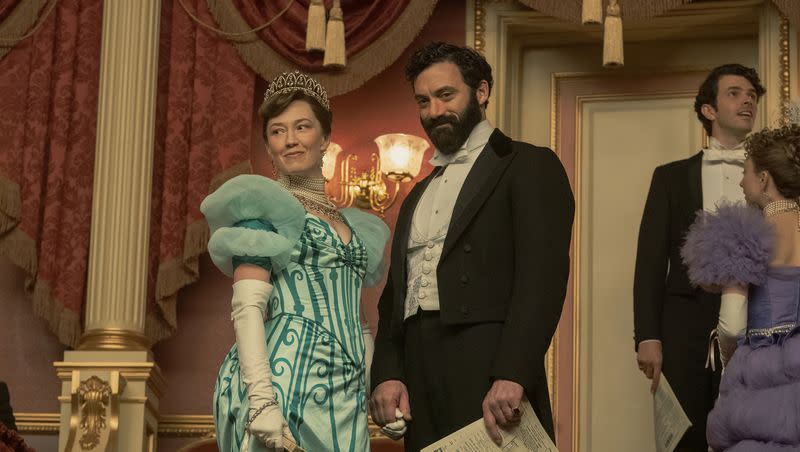The right time for silly shows is the holidays

Halfway through Season 2 of “The Gilded Age,” I declared I was breaking up with the show. The series, which airs Sunday nights on Max, had become too silly even for me, the viewer of multiple Bravo programs.
“The Gilded Age,” created by Julian Fellowes of “Downton Abbey” fame, is ostensibly about a young woman entering the cutthroat world of New York society at the end of the 1800s. Her aunts, with whom she moves in, come from old money. The new neighbors across the street are new railroad money, and the wife, Mrs. Russell, is a committed social climber. The conflict between the two types of wealthy New Yorkers should make for a compelling watch.
But in reality, it’s a jumbled mess. The program is crowded with too many characters and side plots, and keeping them all straight requires a large cork board and some red yarn. Conflicts are resolved nearly immediately after they are introduced, and most of the acting from seasoned stage performers is so over the top it’s difficult to take seriously, as much as the show wants you to take it seriously. By the end of Season 1, the most dramatic reveal was that a chef who claimed to be French was actually from Louisiana. It was all very silly.
But there was something addicting about it, too. Like eating a bag of Doritos or a spool of cotton candy. Not good, exactly, but satisfying.
Related
‘The Gilded Age’ Season 2: The real-life people behind your favorite characters
Has ‘The Gilded Age’ been renewed for Season 3? Here’s everything we know
So I was anxious for Season 2 to start. But when it did start at the end of October, it simply wasn’t working for me anymore. It was a little too much Doritos and cotton candy for my liking. The number of characters and side plots seemed to have tripled. Every scene featured a character I had never seen before and had no interest in getting to know. And the writers’ attempts to incorporate actual weighty matters, such as labor disputes and racism in the South, fell flat against the real conflict of the season — which opera house the New York elite would give their patronage.
And so, four episodes in, I declared I was done, and I switched to more focused and cerebral programs for my nightly viewing. Shows I considered to be more mature and sophisticated.
But then the holiday season hit. And as much as I love the festive season, it is a time of high stress for many of us.
On the other side of Christmas, the last thing I wanted from my shows was more anxiety and conflict. Watching the gritty crime drama I’d been immersed in the past few weeks felt like a burden.
I needed something light and fluffy. Some Doritos and cotton candy. I needed “The Gilded Age” again.
I devoured the last four episodes and relished the absurdity. And there was plenty of absurdity to be had. The labor conflict was resolved as soon as the railroad tycoon realized his workers had families. The sisters who thought their fortune was lost forever to a bad investment found some secret money in one of their late husband’s piles of papers. A butler invented the alarm clock (an actual thing that was invented by someone else). And I loved it.
“The Gilded Age” asks nothing of me. I can watch with one eye closed while playing a game on my phone and I won’t miss anything important. Because there’s never anything important happening.
Sometimes, or more specifically this time of year, that’s the exact kind of entertainment I need. Not good, but satisfying. Fulfilling the very measure of its creation.
And now I’m very much looking forward to Season 3, which fans hope will premiere in late 2024, just in time for the holiday season when I’ll need it most.

